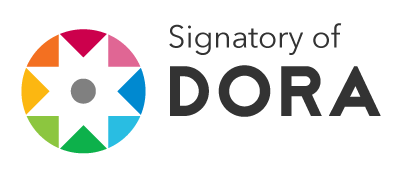Uses and perceptions of artificial intelligence tools in higher education in Mexico
DOI:
https://doi.org/10.35362/rie9516259Keywords:
Artificial Intelligence, Educational Technology, Higher EducationAbstract
With the advent of Artificial Intelligence (AI) in education, it becomes relevant to generate information that reflects the ways in which educational actors understand and implement these resources to establish training actions and guidelines for the use of this technology to improve education. This study aimed to understand the perception and use of AI tools in terms of frequency and types of use, educational expectations around them, as well as the contrasts between the opinions of teachers and students. The methodology used was quantitative, cross-sectional with an inferential-exploratory scope. An intentional sample of N=227 teachers and N=180 university students was obtained. Descriptive analyses were conducted on perceptions and uses of AI tools, followed by a variance analysis for independent samples. Among the main findings, it is observed that 20% of teachers and 33% of students use AI tools. From the inferential analysis, significant differences are obtained between teachers and students in relation to the beliefs they have about the impact of AI on learning, as well as the teachers' ability to identify when students use these resources in the completion of school tasks.
Downloads
References
Aranda, C. (2022). Inteligencia Artificial Aplicada a La Educación: Logros,Tendencias y Perspectivas. Investigación Educativa Ante los Actuales Retos Migratorios, (pp. 1407-1419). Dykinson https://doi.org/10.2307/j.ctv2gz3wvn.112 DOI: https://doi.org/10.2307/j.ctv2gz3wvn.112
Bates, T., Cobo, C., Mariño, O., y Wheeler, S. (2020). Can artificial intelligence transform higher education?. International Journal of Educational Technology in Higher Education, 17(1), 1-12. DOI: https://doi.org/10.1186/s41239-020-00218-x
Castillejos L, B. (2022). Inteligencia artificial y entornos personales de aprendizaje: atentos al uso adecuado de los recursos tecnológicos de los estudiantes universitarios. Educación, 31(60), 9-24. DOI: https://doi.org/10.18800/educacion.202201.001
Chen, L., Chen, P., y Lin, Z. (2020). Artificial intelligence in education: A review. Ieee Access, 8, 75264-75278. https://doi.org/10.1109/ACCESS.2020.2988510 DOI: https://doi.org/10.1109/ACCESS.2020.2988510
González-Videgaray, M., y Romero-Ruiz, R. (2022). Inteligencia artificial en educación: De usuarios pasivos a creadores críticos. Figuras Revista Académica de Investigación, 4(1), 48–58. https://doi.org/10.22201/fesa.26832917e.2022.4.1.243 DOI: https://doi.org/10.22201/fesa.26832917e.2022.4.1.243
Keles, P. U., & Aydin, S. (2021). University Students’ Perceptions about Artificial Intelligence. Shanlax International Journal of Education, 9, 212-220. https://doi.org/10.34293/education.v9iS1-May.4014 DOI: https://doi.org/10.34293/education.v9iS1-May.4014
Lameras, P., & Arnab, S. (2021). Power to the teachers: an exploratory review on artificial intelligence in education. Information, 13(1), 14. DOI: https://doi.org/10.3390/info13010014
León R , G. D. L. C., y Viña B, S. M. (2017). La inteligencia artificial en la educación superior. Oportunidades y Amenazas. INNOVA Research Journal, 2(8.1), 412-422. https://doi.org/10.33890/innova.v2.n8.1.2017.399 DOI: https://doi.org/10.33890/innova.v2.n8.1.2017.399
Loinaz, M. (2021). Sistemas Inteligentes en el ámbito de la Educación. Asociación Española para la Inteligencia Artificial. https://www.redalyc.org/articulo.oa?id=92551202
Macias, R. Solorzano, L. Choez, C. y Blandón B. (2023). La inteligencia artificial; análisis del presente y futuro en la educación superior. RevistaG-ner@ndo, 4(1). 861-887.
Mollick, E. R. & Mollick, L. (2023). Using AI to Implement Effective Teaching Strategies in Classrooms: Five Strategies, Including Prompts. The Wharton School Research Paper. https://doi.org/10.2139/ssrn.4391243 DOI: https://doi.org/10.2139/ssrn.4391243
Moreno, P. R. D. (2019). La llegada de la inteligencia artificial a la educación. Revista de Investigación en Tecnologías de la Información: RITI, 7(14), 260-270. https://doi.org/10.36825/RITI.07.14.022 DOI: https://doi.org/10.36825/RITI.07.14.022
Ocaña-Fernandez, Y., Valenzuela-Fernandez, L., y Garro-Aburto, L. (2019). Inteligencia artificial y sus implicaciones en la educación superior. Propósitos y Representaciones, 7(2), 536-568. https://doi.org/10.20511/pyr2019.v7n2.274 DOI: https://doi.org/10.20511/pyr2019.v7n2.274
Palacios, D. R., & Escudero, N. A. (2021) Percepciones sobre el aprendizaje con tecnología digital en la educación superior. https://go.oei.int/t2qwlx0x
Patricio, W., Acurio, P., Clemente, W., Cuchipe, C., Judith, D., Castro, N., Enrique, L., Zamora, M., Patricio, W., & Acurio, P. (2022). Implementación de la Inteligencia Artificial (IA) como Recurso Educativo. Revista Recimundo, 2, 404-413. https://doi.org/10.26820/recimundo/6.(2).abr.2022.402-413
Popenici, S. A., & Kerr, S. (2017). Exploring the impact of artificial intelligence on teaching and learning in higher education. Research and Practice in Technology Enhanced Learning, 12(1), 1-13. DOI: https://doi.org/10.1186/s41039-017-0062-8
Şeren, M., y Özcan, E. (2021). Post pandemic education: Distance education to artificial intelligence based education. International Journal of Curriculum and Instruction,13(1), 212-225. http://ijci.wcciinternational.org/index.php/IJCI/article/view/568
UNESCO. (2020). Artificial Intelligence and Education. UNESCO Publication. https://www.unesco.org/en/digital-education/artificial-intelligence
How to Cite
Published
Issue
Section
License
Copyright (c) 2024 Iberoamerican Journal of Education

This work is licensed under a Creative Commons Attribution 4.0 International License.
Any authors who publish with this journal accept the following terms:















